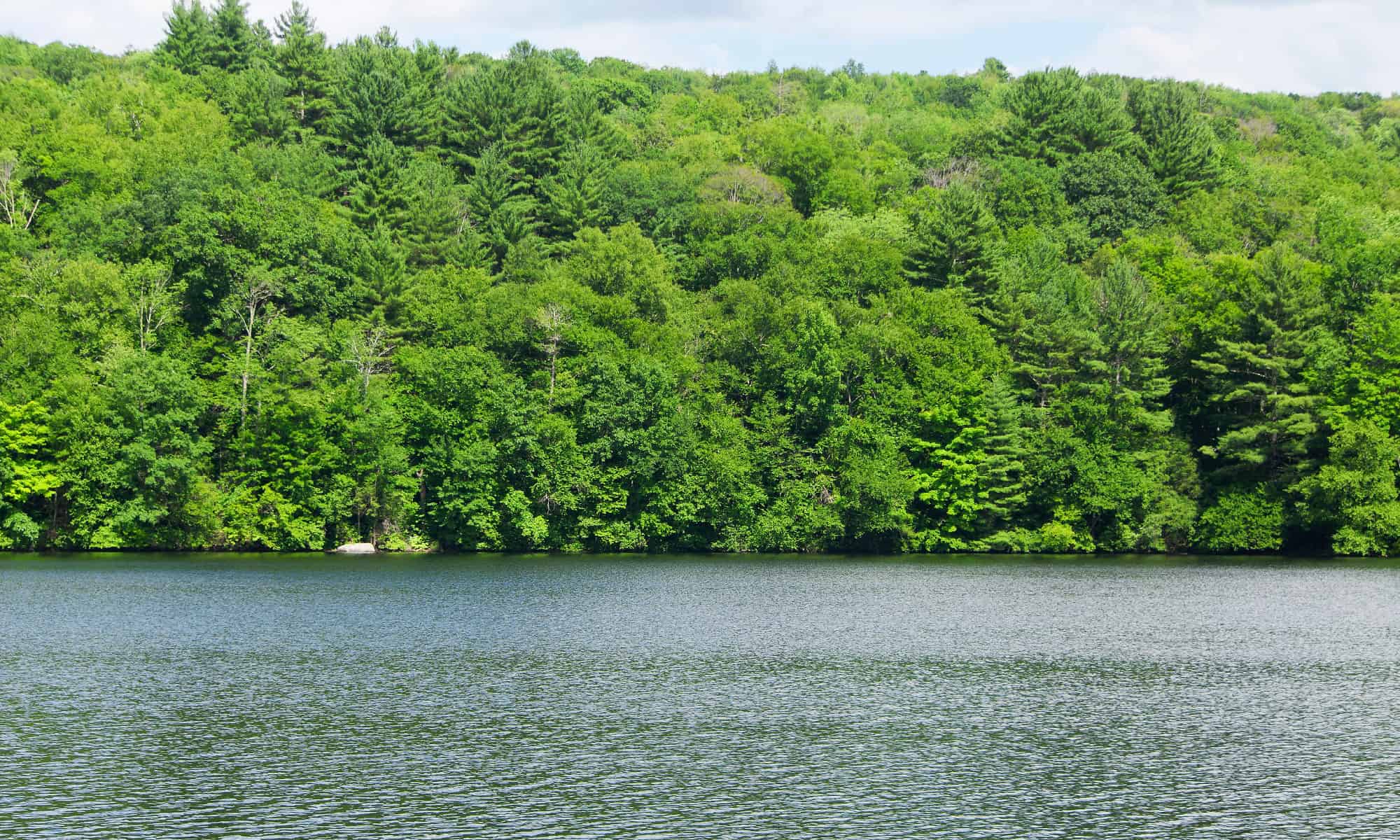Ponds and lakes may only take up 3% of the earth’s surface, but they play an important role in providing essential resources for many species. These rich ecosystems are vital habitats for various plant and animal life and were once an everyday part of human life.
Have you ever encountered a pond teeming with life and wondered what lives at the bottom of the pond?
Discover what plants, animals, and other species lurk beneath the surface of a pond.
What is a Pond?
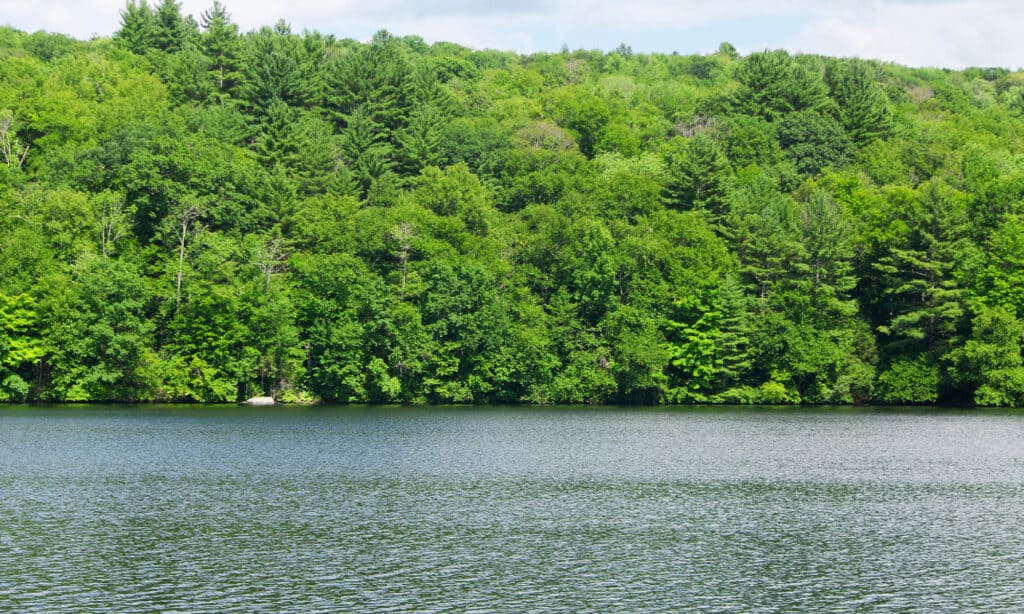
A pond is shallower than a lake and contains plant life from top to bottom and side to side.
©Dan Hanscom/Shutterstock.com
A pond is an open body of fresh water (some are more brackish or salty) that forms from a depression in the ground. It is smaller and shallower than a lake and contains plant life from one side to the other, including on the bottom.
A pond can be filled with either natural or artificial water. Many humans create ponds for enjoyment, while naturally occurring ponds appear through various processes, most commonly spring flooding.
Ponds are relatively shallow water bodies, and each one is entirely unique. The abundance of aquatic plants and animals varies depending on depth, seasonality, nutrients, shape, light, salinity, and the presence of visiting animals.
The most distinct difference between a pond and a lake is whether light reaches the bottom. A pond is shallow enough that sun rays penetrate, and rooted water plants grow everywhere.
Now that you know what a pond is, how exactly are they formed?
How is a Pond Formed?

Humans can create artificial ponds, and ponds can develop naturally through environmental circumstances.
Humans can create ponds artificially, or they can develop through natural events, either geologically or ecologically. Natural ponds occur through environmental circumstances, ranging from glacial, volcanic, fluvial (rivers or streams), or tectonic.
Ponds form when water fills a depression in the ground. Vernal ponds, or temporary ponds, can appear when floodplains along rivers experience a rainy season. These ponds often dry up and then reappear during the spring. Plants and animals living near vernal pools have adapted to survive during the dry season.
Once water fills a depression, early plants, or pioneers, begin growing on the bottom of the pond. Over time, plants called emergents will spring up around the edge. During a pond’s life, plants and animals grow, die, and decompose. Decomposing plants cause soil to build up, making the pond shallower.
As a pond becomes more and more shallow, the plants on the edge will start to grow inside, which turns the pond into a marsh. The marsh eventually becomes a swamp as decomposition produces trees. A pond can subsequently become a forest or grassland over hundreds of years!
What Lives at the Bottom of a Pond?

Flatworms, insect larvae, and mussels live at the bottom of a pond.
©RLS Photo/Shutterstock.com
Creatures like flatworms, insect larvae, and mussels live at the bottom of a pond. Plants like hydrilla and other aquatic and fully submerged species can also grow on the bottom of a pond.
What other plants and animals inhabit a pond system?
Pond Plants
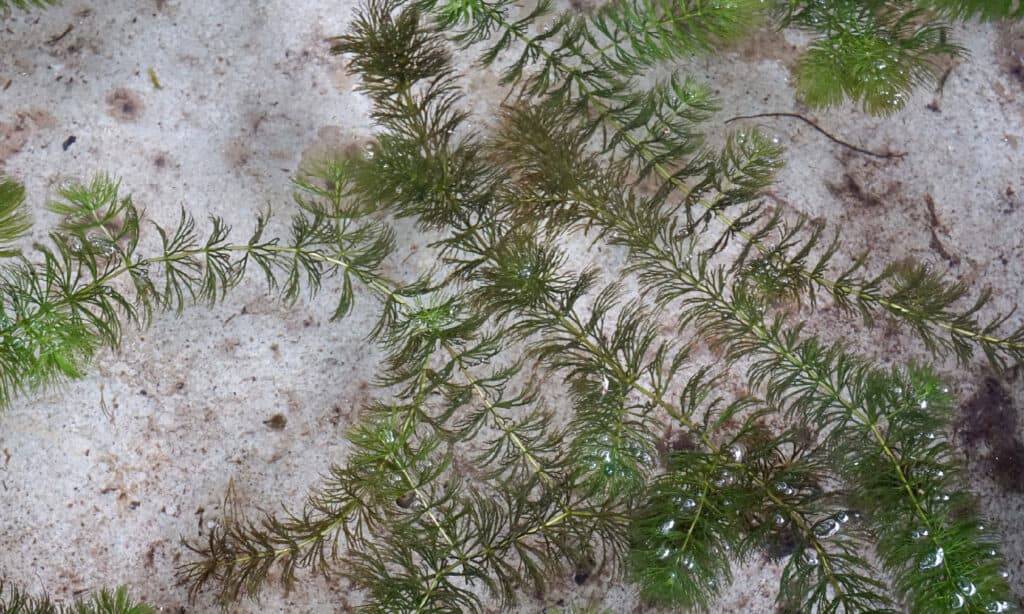
You can find plants like hydrilla, algae, and water lilies in a pond.
©iStock.com/mansum008
A successful pond has native plants growing in and around it. Different plant species inhabit different zones. For instance, some plants will only grow around the edge, while others are completely submerged.
Here is a list of plants you can find in a pond:
- Phytoplankton (microscopic algae)
- Filamentous algae (string-like)
- Willowherb
- Meadowsweet
- Yellow iris
- Mud sedge
- Duckweed
- Frogbit
- Water lilies
- Crowfoot
- Starwort
- Spiked watermilfoil
- Bulrush
- Cattails
- Hydrilla
- Water violet (very rare)
Pond plants provide food, oxygen, and shelter for animals that live in and around them. Ponds with plenty of sunshine are more successful than those in the shade because green plants need plenty of sunlight to make food. Microscopic algae provide most of the food in a pond and are the first part of the food chain.
Pond Animals
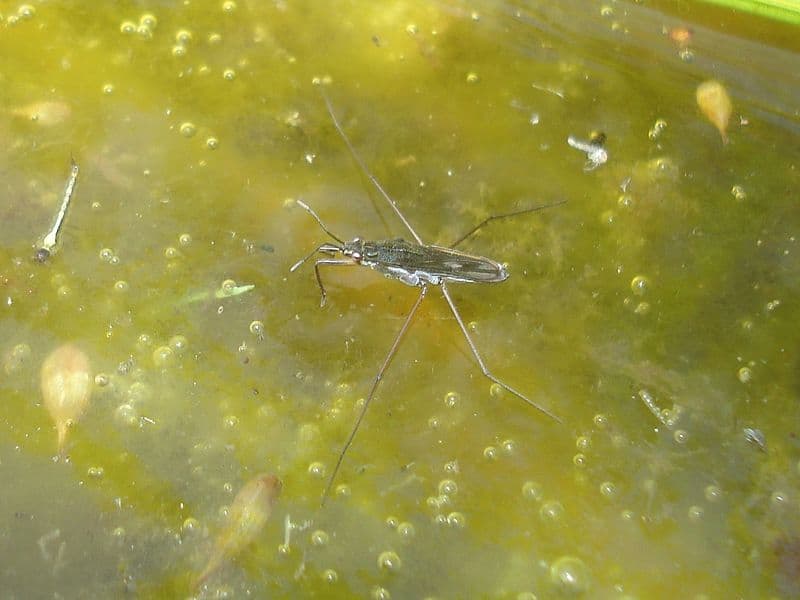
Animals like water voles, pond skaters, toads, and newts live in a pond.
©Sanja565658 / Creative Commons – Original
There are over 1,000 animal species that can live in a pond. However, each is unique and will contain different species. Each pond includes mammals, birds, amphibians, and insects.
Here is a list of animals you can find in a pond:
- Water voles and shrews
- Ducks
- Herons
- Kingfishers
- Beavers
- Muskrats
- Frogs
- Toads
- Newts
- Small fish like sticklebacks
- A wide variety of invertebrates like spiders, worms, centipedes, snails, and beetles
- Dragonflies
- Water fleas
- Snakes
- Freshwater mussels
- Larvae
- Snapping turtles
- Pond skaters
- Mosquitos
The list of pond animals is vast, but you won’t find all these species in any given pond. Pond life depends entirely on the region and the plants and animals native to that area.
Other Life Found in a Pond
For plants and animal species to live in a pond, they must be able to survive extreme temperatures (frozen ponds) and dry seasons. Pond organisms must be capable of transferring from one pond to another. Without this ability, they would not survive.
Many organisms, like bacteria, protozoa, fungi, and arthropods, are transferred from wind-blown spores and eggs. Birds fly from pond to pond, carrying materials and defecating various seeds that eventually produce more life.
Endangered Pond Animals
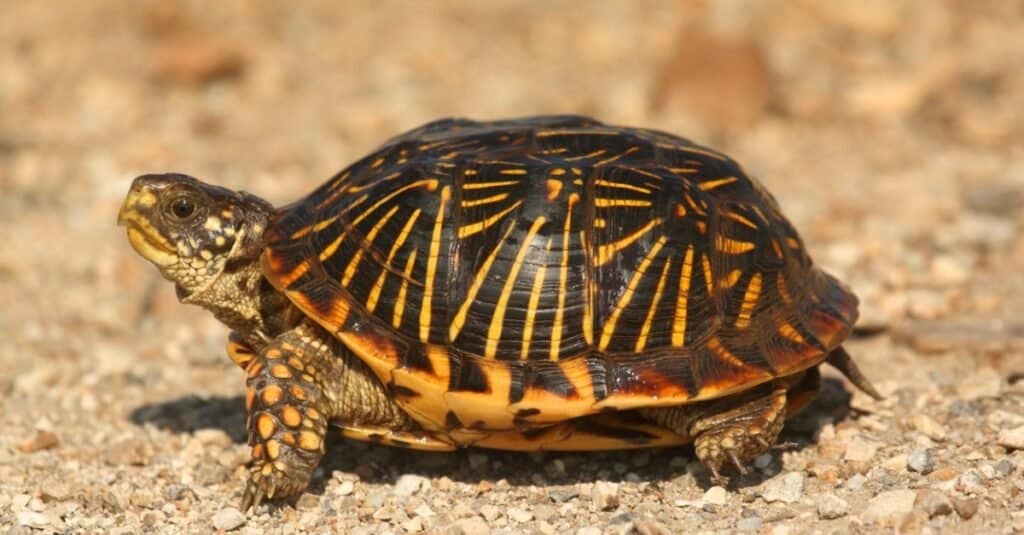
Endangered pond animals like the western pond turtle face shrinking habitats from pollution and human disruption.
©iStock.com/SteveByland
Pond biodiversity is sensitive to pollution and human disruption. Many animals rely on these rich habitats, and some species become endangered without them. As pond habitats shrink, animals are unable to replenish their populations.
Currently, endangered pond animals include:
- Western pond turtle (Washington)
- Yellow-spotted tree frog (Australia)
- Plymouth red-bellied turtle (Massachusetts)
The Most Unusual Ponds in the World

The Don Juan Pond is one of the saltiest bodies of water on earth.
©NASA/Goddard Space Flight Center Scientific Visualization Studio, Landsat 7 Project Science Office; MODIS Rapid Response Team, NASA Goddard Space Flight Center (http://rapidfire.sci.gsfc.nasa.gov) / This file is in the public domain in the United States because it was solely created by NASA. NASA copyright policy states that “NASA material is not protected by copyright unless noted”. (See Template:PD-USGov, NASA copyright policy page or JPL Image Use Policy.) – Original / License
The Don Juan Pond in east Antarctica is one of the most interesting ponds on earth. It’s filled with a syrupy brine that remains liquid in temperatures as low as -58℉, similar to what scientists believe could exist on Mars. It is one of the saltiest bodies of water found on earth. The source of its water was unknown until researchers discovered a deep groundwater system (the pond is fed from beneath).
White Pocket, a group of multicolored formations in Arizona’s Paria Canyon, contains an alien-like pond. The pond looks like it houses extraterrestrial life, but it gets its neon color from an abundance of algae. This green-glowing pond is surrounded by a rocky landscape and is only accessible by four-wheel drive.
What is the Largest Pond in the World?
Great Pond in Kennebec County, Maine, is the largest pond in the world. Great Pond is 8,533 acres, has a perimeter of 46 miles, and is home to several small islands.
Summers on Great Pond are nothing short of exciting. Its panoramic views bring travelers from all over the country for fishing, boating, swimming, and jet-skiing. A dam constructed in 1886 helped shape this giant pond, which is now an instrument for human activity and home for animal life.
Thank you for reading! Have some feedback for us? Contact the AZ Animals editorial team.

